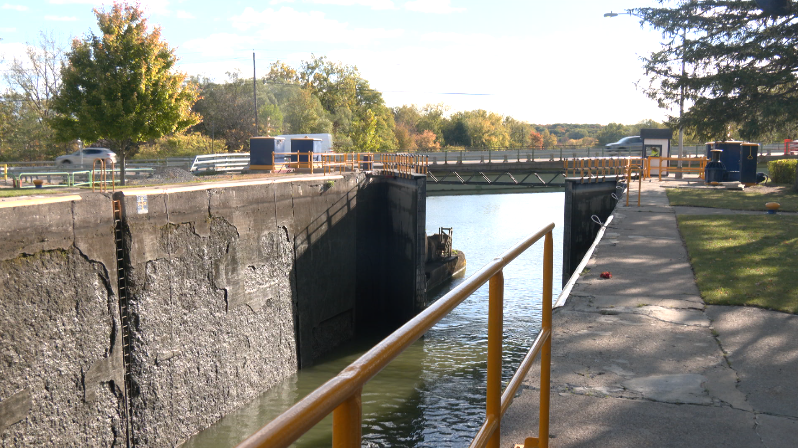The News10NBC Team details breaking News, Traffic and Weather.
PITTSFORD, N.Y. – There have been 200 years of cruising down the Erie Canal, but that wouldn’t be possible without locks. Locks are essential for navigation on the canal, acting as elevators for boats.
Shawn Daily, a transportation maintenance engineer, explained the importance of locks. “Locks are located in areas where there are large changes in elevation and without the locks, we would not be able to have continuous navigation throughout the Erie Canal,” said Daily.
The process begins when boats enter the lock and the gates close. “You close the lower valves and you open the upper valves. You allow water to fill in from the upper end of the lock into the lock chamber,” said Daily.
Lock 32 in Pittsford is 300 feet long and 45 feet wide, taking seven to 10 minutes to fill. Daily clarified a common question, “One question we always get is how large are the pumps used to fill the lock chamber. And we don’t use pumps at all. It’s all fed by gravity. So every time that we release a blockage, we release 2.5 million gallons of water downstream.”
Lowering the water level takes about the same time, dropping the boats over 25 feet. Although the canal is 200 years old, Lock 32 is only half that.
Lock 32 was built 110 years ago as the canal’s route changed. Nearly 2,500 vessels have passed through Lock 32 this year.
“It’s really a testament to the engineers and the canal staff that came before us, because we’re still using the same technology that was created 110 years ago. And the fact that it’s been continuously operating for 200 years is amazing,” said Daily.
The tallest lock on the Erie Canal is in Little Falls, N.Y., which raises and lowers boats 40 feet.
AI assisted with the formatting of this story. Click here to see how WHEC News10NBC uses AI
For Related Stories: Erie Canal Erie Canal Bicentennial Lock 32 Pittsford

